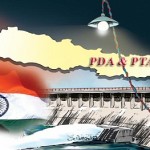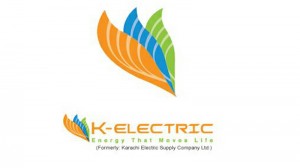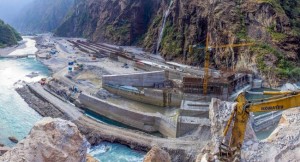NEPAL > PTA signed. What next?

The signing of Power Trade Agreement (PTA) between Indian and Nepal is considered to be a historic moment. Both countries have shown flexibility from each side to make this deal happen. To be more specific, the Modi government showed flexibility towards signing of PTA. The controversial demand of “generation” by Indians only was dropped by the Modi’s government which not only protects the sovereign right of Nepal but also shows that Indian’s willingness to do business with Nepal in a respectful manner.
PTA shall be effective for the next 25 years where Nepalese developers will have access to Indian market. We all know India and Nepal both are energy hungry country. PTA not only allows Nepalese developers to export surplus electricity but also allows Nepal to import electricity from India when needed.
Previously, a lot of investors (both domestic and foreign) were hesitant to make investment in Nepalese hydro due to the fact that the Nepalese electricity market is comparatively small. With signing of the PTA, Nepal energy has a huge market in India therefore, many experts, analysts and investors think that it is a high time to invest in Nepal to tap the hydropower potential and earn profits. The deal will provide Nepal non-discriminatory access to the Indian market.
At present Nepal is importing electricity from India. This scenario could be changed in few years of time. Nepal will be exporting electricity to India. There is a mere trade of around 200 MW between Nepal and India at the moment (Nepal is the importer). The trading figure will increase sharply as soon as the Dhalkebar-Muzzafarpur transmission line is completed. Besides, there are other cross border transmission lines which are under construction.
In short, the signing of PTA is a welcoming act. But we have to see how it is going to be implemented.
I, personally, have spoken to many experts, industrialists and policy makers regarding the model of PTA. But I have not been able to find any concrete answers to my questions. I believe the success and failure of the PTA largely depends upon the modality. So I believe the following questions are very important.
1) Tariff:- How much will be the tariff and what will be the mechanism for making the fair tariff? Is it going to be the flat rate like now where developers get NPR 4.80 per kWh for wet season and NPR 8.40 per kWh for dry season when sold to NEA? Or is it going to be the “Time of the day pay” as practiced in India. As we know, the demand of energy greatly varies in a day.
2) Wheeling Charge:- Normally, when someday uses others’ transmission line for power evacuation a wheeling charge will be levied. In such case, who will pay the wheeling charge? Buyers or Producers? And what will be the charge?
3) Line Loss:- It is inevitable to have a line loss due to difference in voltage and the length of the transmission line. In such case who has to bear the line loss provision? Developers, Transmission Line Companies or Buyers? And by what percentage?
I have tried to find the answers for above cases which I personally believe that these are very crucial.




